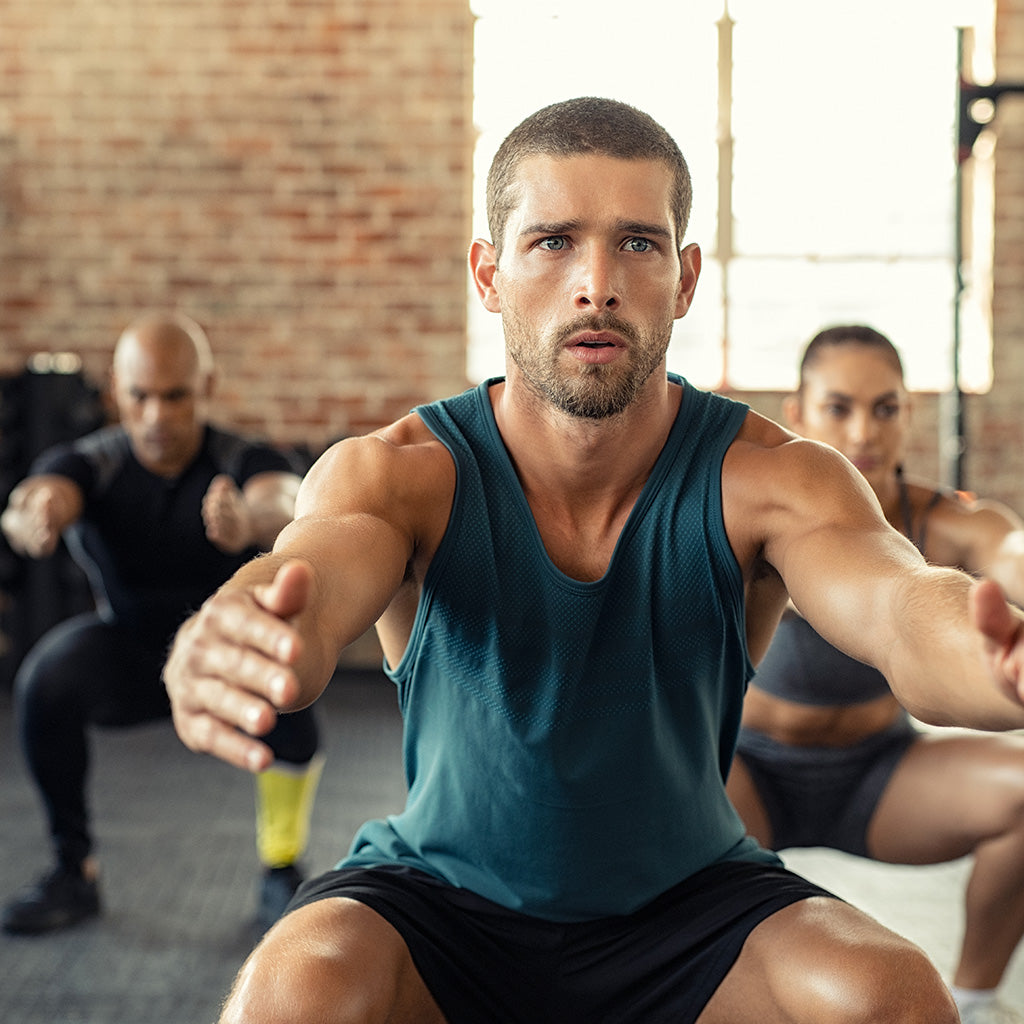So you’ve embarked on a mission called the ketogenic diet.
In the early days, your body may be going through a few changes, like a drop in insulin levels and a reduction in glycogen stores.
As a result, you may be experiencing weight loss and less of that bloated feeling… which could most likely be your primary goal for the diet, right?
But because the ratio of glycogen (stored carbs) to water is 1:3 grams, fewer glycogen stores can also mean less water in your body. And out goes your electrolytes too.
If this is a cause of worry for you, fret not! You can still keep a healthy level of electrolytes even under a low-carb diet. The key is to know what the rich sources of electrolytes are.
The electrolytes you need
While on a ketogenic diet, making sure that you’re getting enough electrolytes is equally important as watching and testing your ketone levels.
According to the article “Are electrolytes good for you?” there are various types of electrolytes that your body needs. But for a low carbohydrate or ketogenic diet, three of them stand out:
Sodium
Your regular diet may already be meeting the recommended daily intake for sodium. But in the early days of the keto diet, you may want to have a little bit more to avoid dehydration and electrolyte imbalance. Make sure you get 1,500 to 2,300 mg of sodium. [1]

Potassium
This electrolyte works together with sodium in keeping the right water and acid-base (pH) balance in your body. Together with calcium, potassium controls nerve and muscle activity in your system.
A lack of potassium can inhibit your body from storing glycogen, which is where your muscle activity gets energy from. It can also lead to hypokalaemia, which manifests in the form of abnormal heart rhythms (arrhythmias), severe muscle weakness, fatigue, constipation, muscle cramping, and palpitations. [2]
Make sure you get 4700 mg of potassium per day.

Magnesium
This electrolyte takes care of cell function, enzyme activity, muscle function, nerve signaling, sleep and regulating mood. [3]
If you’re suffering from muscle cramps, experiencing symptoms of PMS or menopause, feeling tired, or simply having “one of those days”, then you may want to up your level of magnesium.
Depending on how old you are and your gender, the RDA for magnesium varies between 310 and 420 mg per day. [4]

Key sources of electrolytes while on keto diet
If you’re preparing your everyday meals as part of your keto mission, then it’s worth knowing which foods and ingredients are rich in electrolytes.
Here are some of those you can start adding more to your diet, as well as the amount to take: [5]
Himalayan Salt or Sea Salt
Just like any other salt, Pink Himalayan Salt contains sodium which may cater to your recommended daily intake.
Some people on the keto diet may be concerned about a sprinkling of salt here and there. But a low carb diet might need a tad more salt than usual.
A good thing about opting for pink over white is what many think of Himalayan salt – it’s purer than regular rock salt.
To learn more, read these articles:
- Everything you need to know about Pink Himalayan Salt. Is it time to switch to pink?
- 5 surprising benefits of Pink Himalayan Salt
Seeds
Sprinkling seeds onto your meal is a surefire way of adding rich electrolytes into your keto diet. They could be your go-to source for magnesium and potassium!
- Pumpkin seeds – 156 mg of magnesium and 223 mg of potassium [6]
- Hemp seeds – 210 mg of magnesium and 360 mg of potassium [7]
- Flax seeds – 110 mg of magnesium and 228 mg of potassium [8]
- Chia seeds – 95 mg of magnesium and 115 mg of potassium [9]
Nuts
Nuts are an easy source of electrolytes, especially if you’re on the lookout for high levels of potassium and magnesium. Munch on them during snack time, mix them with seeds, or add them to your salads.
- Almonds – 77 mg of magnesium and 208 mg of potassium [10]
- Cashews – 83 mg of magnesium and 187 mg of potassium [11]
- Brazil nuts – 107 mg magnesium and 206 mg of potassium [12]
Optional: mix them up with salts to level up your sodium intake!
Fatty Fish
Aside from helping you fight harmful free radicals (thanks to omega 3 fatty acids), fatty fish is a rich source of electrolytes.
- Mackerel – 129 mg of magnesium, 534 mg of potassium and 153 mg of sodium [13]
- Salmon – 46 mg of magnesium, 617 mg of potassium and 100 mg of sodium [14]
- Tuna – 60 mg of magnesium, 750 mg of potassium and 77 mg of sodium [15]
Non-Starchy Vegetables
Having a low carb or keto diet doesn’t mean you can’t have any veggies. In fact, non-starchy vegetables are just right since they contain nutrients like magnesium and potassium.
- Spinach – 157 mg of magnesium and 839 mg of potassium [16]
- Swiss chard – 150 mg of magnesium and 961 mg of potassium [17]
- Kale – 30 mg of magnesium and 170 mg of potassium [18]
- Artichokes, globe – 35 mg of magnesium and 240 mg of potassium [19]
- Mushrooms, white – 19 mg of magnesium and 555 mg of potassium [20]
Bone Broth
It not only smells good and is fitting for the cold weather, but bone broth also provides hydration and a rich source of sodium.
Simmer the bones and connective tissue of your favorite meat. A cup a day can significantly help with the symptoms of the keto flu as the amount of electrolytes in it is extremely rich.
It contains 120 mg of magnesium, 528 mg of potassium and 1,104 mg of sodium (values vary per each batch and depend on the bones and the amount of salt used).
You can put your favorite meat into the mix for added sources of electrolytes:
- Turkey breast – 42 mg of magnesium, 403 mg of potassium and 211 mg of sodium [21]
- Beef steak – 39 mg of magnesium, 581 mg of potassium and 94 mg of sodium [22]
- Pork chop – 42 mg of magnesium, 585 mg of potassium and 94 mg of sodium [23]
Avocado
What’s perfect to add in your salad or favorite toast? Avocados! They don’t just add Insta-worthy colors on your plate, they’re also packed with healthy monounsaturated fats perfect for the low carb diet.
- Avocado – 1 large (200 g/ 7 oz) contains 58 mg of magnesium and 975 mg of potassium [24]
Dietary Supplements
Electrolytes are also present in dietary supplements which serve as electrolyte salts, sometimes mixed with other key ingredients such as caffeine and Pink Himalayan Salt for optimal hydration support.
Supplements like VALI Electrolyte Salts with Pink Himalayan Salt can help you avoid dehydration, minimize heat stress, boost performance, and reduce muscle cramping before, during, and after exercise.
Source
[1] https://www.ncbi.nlm.nih.gov/pubmed/26028242
[2] https://www.healthline.com/health/hypokalemia
[3] https://www.globalhealingcenter.com/natural-health/electrolytes/
[5] https://ketodietapp.com/Blog/lchf/top-10-low-carb-and-keto-foods-high-in-electrolytes
[6] https://ndb.nal.usda.gov/ndb/foods/show/302505
[7] https://ndb.nal.usda.gov/ndb/foods/show/302502
[8] https://ndb.nal.usda.gov/ndb/foods/show/12220
[9] https://ndb.nal.usda.gov/ndb/foods/show/12006
[10] https://ndb.nal.usda.gov/ndb/foods/show/12061
[11] https://ndb.nal.usda.gov/ndb/foods/show/12087
[12] https://ndb.nal.usda.gov/ndb/foods/show/12078
[13] https://ndb.nal.usda.gov/ndb/foods/show/15046
[14] https://ndb.nal.usda.gov/ndb/foods/show/15236
[15] https://ndb.nal.usda.gov/ndb/foods/show/15127
[16] https://ndb.nal.usda.gov/ndb/foods/show/11458
[17] https://ndb.nal.usda.gov/ndb/foods/show/11148?
[18] https://ndb.nal.usda.gov/ndb/foods/show/11234
[19] https://ndb.nal.usda.gov/ndb/foods/show/11702
[20] https://ndb.nal.usda.gov/ndb/foods/show/11234
[21] https://ndb.nal.usda.gov/ndb/foods/show/300421
[22] https://ndb.nal.usda.gov/ndb/foods/show/13000








